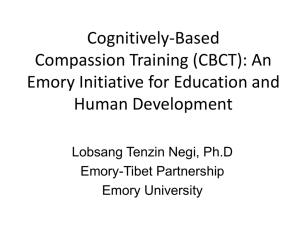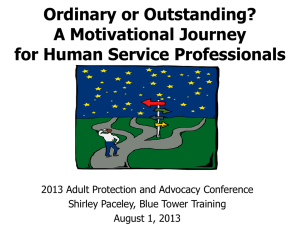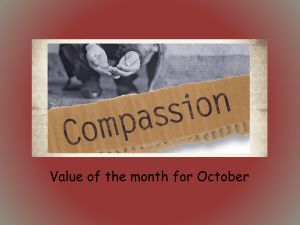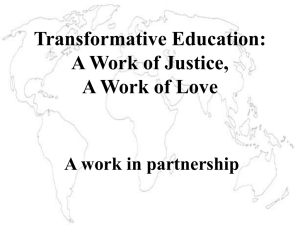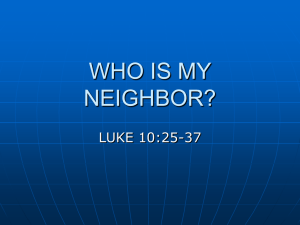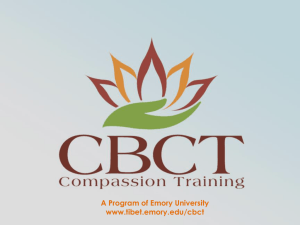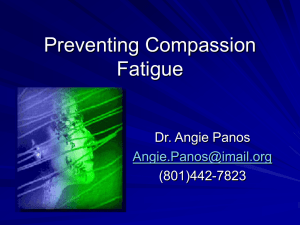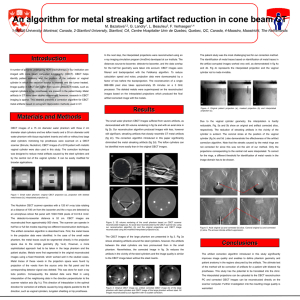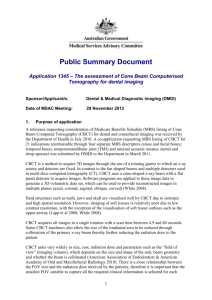Building Blocks of Compassion
advertisement
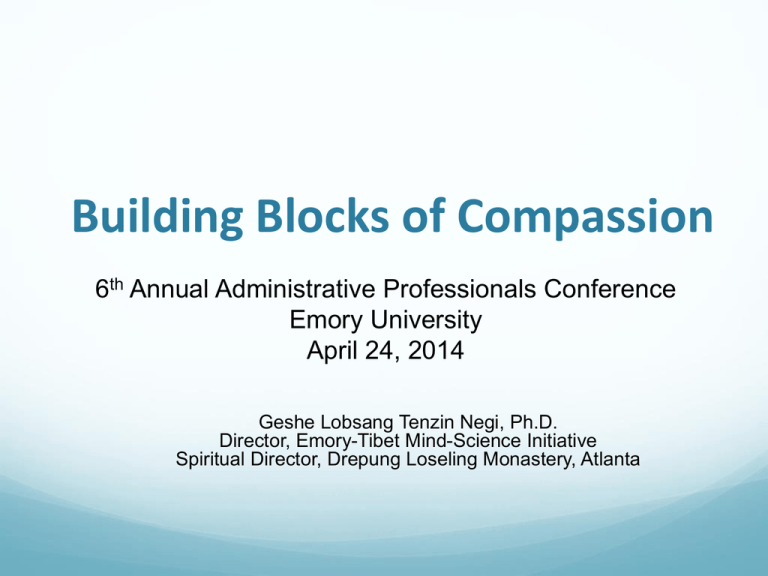
Building Blocks of Compassion 6th Annual Administrative Professionals Conference Emory University April 24, 2014 Geshe Lobsang Tenzin Negi, Ph.D. Director, Emory-Tibet Mind-Science Initiative Spiritual Director, Drepung Loseling Monastery, Atlanta Outline 1. What is compassion? 2. Benefits of compassion 3. Can we cultivate compassion? 4. Cognitively-Based Compassion Training: a specific approach for developing compassion 5. Key Components of CBCT What is Compassion? The essence of compassion is a desire to alleviate the suffering of others and to promote their well-being. This is the spiritual principle from which all other positive inner values emerge. –His Holiness the Dalai Lama, Beyond Religion At a basic level, compassion (nying je) is understood mainly in terms of empathy–our ability to enter into and, to some extent, share others’ suffering. –His Holiness the Dalai Lama, Ethics for the New Millennium Benefits of Compassion So the human capacity to care for others is not something trivial or something to be taken for granted. Rather, it is something we should cherish. Compassion is a marvel of human nature, a precious inner resource, and the foundation of our well-being and the harmony of our societies. If, therefore, we seek happiness for ourselves, we should practice compassion; and if we seek happiness for others, we should also practice compassion! –H.H. the Dalai Lama, Beyond Religion Benefits: Effects of CBCT on biochemical stress responses 0.5 0 -0.5 -1.0 -1.5 0 15 30 45 60 75 90 0.5 0 -0.5 -1.0 -1.5 0 Time (min) 15 TSST plasma cortisol, µg/ml plasma cortisol, µg/ml TSST Cortisol TSST after meditation training log plasma IL-6, pg/ml IL-6 log plasma IL-6, pg/ml TSST prior to meditation training 18 16 14 12 10 8 30 45 60 75 90 Time (min) 18 16 14 12 10 8 0 0 0 15 TSST 30 45 60 75 Time (min) Pace et al. Psychoneuroendocrinol 2009;34:87-98; Pace et al. Psychoneuroendocrinol 2010; 35: 310-15 90 0 15 TSST 30 45 60 75 90 Time (min) low practice high practice Benefits of Compassion Training: Empathic Accuracy IFG Brain Activation and Reading the Mind in the Eyes * p < 0.05 p < 0.05 CBCT Group Control Group Mascaro et al. SCAN 2013; 8(1):48-55. * CBCT for At-risk Adolescents in Foster Care “We have no shortage of programs for kids in care, but they are all focused on changing external circumstances. We need a program that brings about inner change, and I feel that Emory’s compassion program is exactly what our children need.” B.J. Walker Commissioner, GA Division of Human Services, 2009 • Helped youth transform relationships with caregivers, teachers and peers • Encouraged concrete changes in their behavior Lower inflammation and greater hope in foster care adolescents who practiced CBCT more more hope 60000 55000 50000 45000 40000 35000 30000 25000 20000 15000 10000 5000 0 11 10 9 8 7 6 5 4 3 2 1 0 -1 change in Children’s Hope Scale Score from before to after training saliva C-reactive protein controlling for baseline higher inflammation low CBCT practice* lower inflammation high CBCT practice* *below or above median practice sessions Pace, Negi, Dodson-Lavelle, Ozawa-de Silva, Reddy, Cole, Danese, Craighead & Raison (in press). Psychoneuroendocrinology, July 2, 2012 less hope low CBCT practice* high CBCT practice* Reddy, Negi, Dodson-Lavelle, Ozawa-de Silva, Pace, Cole, Raison, Craighead (in press) Journal Child Family Studies, February 21, 2012 Social Circles Task Antonucci et al., 1998 % of children who add friends % children with peer friendships CBCT(N=26) MINDFULNESS (N=27) • Only children who learn CBCT add significantly more friends to their social network (p=.005) • Only children who learn CBCT add significantly more peer (same-class) friendships (p=.019) (Dodson-Lavelle, Robbins, Ozawa-de Silva, Pace, Negi, Raison, Rochat, in preparation.) Can we cultivate compassion? “Generally I distinguish two levels of compassion. The first is the biological level I have been describing, exemplified by the affection of a mother for her newborn child. The second is an extended level, which has to be deliberately cultivated. While compassion at the biological level can be unconditional, like the mother’s love for her baby, it is also biased and limited in scope. Nevertheless, it is of the utmost importance, because it is the seed from which unbiased compassion can grow. We can take our innate capacity for warm-heartedness and, using our intelligence and conviction, expand it.” –His Holiness the Dalai Lama, Beyond Religion Can we cultivate compassion? “As man advances in civilization, and small tribes are united into larger communities, the simplest reason will tell each individual that he ought to extend his social instincts and sympathies to all the member of the same nation, though personally unknown to him. This point being, once reached, there is only an artificial barrier to prevent his sympathies extending to the men of all nations and races… Sympathy beyond the confines of man, that is, humanity to lower animals, seems to be one of the latest moral acquisitions. This virtue, one of the noblest with which man is endowed, seems to arise incidentally from our sympathies becoming more tender and more widely diffused, until they are extended to all sentient beings.” –Charles Darwin, The Descent of Man Cognitively-Based Compassion Training: A specific approach for developing compassion • Cognitively-Based Compassion Training (CBCT) is drawn from the lojong (training the mind) and lam rim (stages of the path) traditions of Tibetan Buddhism, but rendered into secular form. It was developed as a protocol for research on compassion training at Emory University. • CBCT recognizes a biologically-given potential for compassion in all of us, but employs deliberate training to expand this capacity beyond the limits of in-group/out-group bias. Key components of CBCT 1. Developing Attentional Stability 2. Self-Compassion 3. Developing Impartiality 4. Developing Affectionate Love and Empathy 5. Strengthening Compassion “ A human being is part of the whole called by us universe, a part limited in time and space. We experience ourselves, our thoughts and feelings, as something separate from the rest. A kind of optical delusion of consciousness. This delusion is a kind of prison for us, restricting us to our personal desires and to affection for a few persons nearest to us. Our task must be to free ourselves from the prison by widening our circle of compassion to embrace all living creatures and the whole of nature in its beauty. The true value of a human being is determined by the measure and the sense in which they have obtained liberation from the self. We shall require a substantially new manner of thinking if humanity is to survive”. –Albert Einstein
